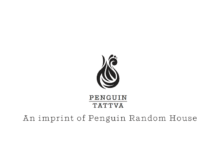Since last June, Mengis Druck, a division of Mengis Group in Visp, Switzerland has been digitally printing the Walliser Bote newspaper on an HP T400 PageWide inkjet digital press with Manroland handling digital finishing. This isn’t news but when we took a closer look at what HP and manroland web systems are doing for Mengis Group, we had to ask ourselves a big question. For newspaper production is this the beginning of the end for offset, or the end of the beginning for digital printing?
When the announcements were first made, this project was hailed as a breakthrough. The first digitally printed newspaper and so on. It wasn’t. Kodak has had newspaper publishers and retailers using its Versamark presses for years. What makes the Walliser Bote special is that it’s the first regional newspaper to be entirely produced using digital technology for printing and finishing. It’s also the first time a conventional newspaper press manufacturer has partnered so intimately with a digital press maker, in this case Manroland working with HP. In the words of Jörn Gossé, Manroland’s managing director since 2013, the company is now in the “new business of digital printing and finishing.” Manroland is providing the FoldLine variable format and cut-off folding system, associated software and overall workflow integration. Manroland has a strategic alliance with HP which provides the T400 PageWide inkjet web press technology.
Mengis Group is a third generation family printing and publishing business serving the Valais district of Switzerland where people speak French, German and various regional dialects. The Walliser Bote is a 175-year-old title, staunchly independent and utterly local, serving a market of 80,000 people with circulation at 22,000 (down from 27,000 in 2000) and a readership of 44,000; it reaches 64.4% of the population. Mengis Druck prints books and commercial work as well as the Walliser Bote, which it produces with a QPS editorial system. Commercial printing is low margin work, so the company hopes to exploit data more effectively through its partnership with Manroland and HP.
Nicolas Mengis, owner of Mengis Group, does not see competition between offset and digital, but rather complementary applications of technology because “our focus is to integrate in order to have endto-end production systems.” He adds that variable data printing and format flexibility offer a “tremendous increase in the potential market to be reached.” The new digital system prints 7,000 32-page newspapers in the Berlin format or 96-page tabloids, 16,000 32-page A4 brochures or 32,000 16-page A4 brochures an hour. It can produce 2,600 150 mm x 120 mm book blocks of 280 pages an hour. Copy one is the same as copy n, so quality is consistent. Mengis Druck achieves ISO 12647-2 targets.
Roles
Manroland was founded in 1845 so it has considerable experience in building presses and marrying ink and paper at speed. The company’s mission is to leverage its workflow, web tensioning and folding knowledge, and partnerships are a means of achieving this. Manroland focusses on automation and in-line finishing, for in-line changes to page counts or product structures. Just as variable content data gets changed on the page, Manroland’s technology can change formats rapidly. This is the first phase of Manroland driving digital printing into newspaper production sites.
For HP the project is part of its strategy to play in every area of printing, including sign and display, packaging and labels, commercial, et al. The PageWide technology has evolved at an astonishing speed and HP’s intention is to keep driving it to go ever quicker. This will clearly enhance its appeal for newspaper production.
HP provides the guts of the Mengis Druck production model, the T400 which has replaced Mengis’s 32-year-old Wifag web offset machine. It has a 1,067 mm-wide web with two print modules for duplex printing, running at up to 182 metres a minute on substrates from 40 to 200 gsm. This press uses HP’s A51 binary thermal inkjet heads printing at 1,200 dpi. HP is aiding Mengis Group’s efforts to develop its business model, because as Bruno Trouvé, HP’s newspaper specialist, says, “The more you print the better you optimize your assets.” And the more ink and printheads you use, the better HP likes it. Mengis Druck is a likely candidate to upgrade to the T480HD press introduced last September. This press features HP’s latest HDNA head technology printing at 2,400 dpi with two drop sizes, and runs at 244 metres a minute in production mode and 122 metres a minute in quality mode onto substrates from 60 to 350 gsm.
Workflow in action
Manroland is providing the system’s glue and has installed its Master Q, WorkflowBridge and Imposer software suites at Mengis Group. They provide integrated digital control systems, linking equipment with information communicated via JDF. Data from higher level planning systems, say an MIS or workflow system, is shared so incoming jobs are sorted upstream and settings for all units involved in production accurately calculated. The finishing units determine the components to be used in production and changeover requirements, so it is vital to get the prioritizing right.
Manroland’s modular and scaleable Master Q system adds automation to existing prepress systems. It takes care of job data processing, sharing information with Mengis Group’s MIS so that production is sorted to prioritize jobs/ads following customer-specific algorithms. Master Q sorts jobs to optimize equipment and ensure fast changeovers and to drive multiple output paths – digital printing and offset, so it’s a platform for any type of print. According to Andreas Elchlepp, responsible for software development and workflow, it is part of Manroland’s “solutions that take our customers by the hand and link up to digital printing technologies,” a bridge between the offset and digital worlds. Manroland is integrating offset into digital printing rather than the other way around. Elchlepp says that with Master Q “digital systems and offset systems can now be brought together.”
Master Q provides WorkflowBridge with the same job data as is delivered to the T400 so this data determines what happens on press and in finishing. Imposer generates impositions automatically. Manroland uses its knowledge of how folding lines work to align page positioning and calculate signatures for both output methods, which can be combined depending on the print product. WorkflowBridge is a series of plugins and workflows, an intelligent finishing controller that works with FoldLine. FoldLine handles the finishing for newspapers and books at web speeds of 300 metres a minute and can be configured for a range of widths, say for books up to 1,518 mm. Auto reel change takes three minutes, giving Mengis the flexibility to support multiple print products.
Mengis Druck’s FoldLine system is being used with an inserter system to produce a wide range of digitally printed products. The cut-off variability is what makes it economical to use this combination for different types of work, in very low volumes and in highly customized formats. Exploiting Foldline to the maximum depends on how well Mengis Group can configure and reconfigure its data to create new products.
Alwin Stadler, Manroland’s vice president of digital printing, says, “With our expertise in system integration and with networked thinking . . . we can achieve fully automated, high-performance workflows with all digital printing press manufacturers. This also applies to hybrid production, for that matter. We are already able to plan and monitor offset and digital productions from a central workstation.”
News digital printing a slow burn
Despite valiant attempts to make digital printing pay in newspapers, there have been many obstacles and few successes. The toughest challenge has always been speed. Digital presses run at around 5 metres a second and offset newspaper presses at 10 to 15 metres a second, depending on the cut-off and press configuration. A Manroland Colorman can print 90,000 multipage newspapers an hour, so clearly digital presses cannot yet play in such a game. Even today the technology is worlds away. For batteries of digital presses located at railway stations and city centres, or kiosks in hotels, the numbers never added up.
Another difficulty was the cost of inks and toners and the requirements of digital presses for special papers optimized for the print method. Offset ink is three to five times cheaper than digital inks. Consequently publishers, including Mengis Group, tend to lay down less color to save costs and minimize show through, but subscribers can see the quality difference. For Mengis Druck this has been the biggest objection to the change, along with having to get used to a different flop (feel of the paper when it folds). These factors impact but do not necessarily undermine the business model.
Support was also expensive for many digital printing models, so economic and practical constraints confounded widespread adoption. Despite having just about the most sophisticated front end systems on the planet, few newspapers have been able to configure those systems to suit on demand, variable content digital printing. Overthinking business in a multichannel world and tripping on ideas that may not be in sync with changing reader habits, seems to take priority. Consequently few newspaper publishers have developed viable business models based on variable data and content processing, and distributed digital printing. But that will change.
Advances in data, especially in publishing systems like QPS, front end systems designed specifically to leverage digital printing’s variable data strengths, are happening. Over the last couple of years new opportunities have presented themselves, based on productivity improvements, printing speeds approaching 300 metres a minute and the use of standard offset papers. We have a suitable output technology for short-runs that can be produced at the same cost level as conventional printing. Mengis says, “this leads us to the business model that Mengis Druck has adopted,” to be a print service provider for zoned newspapers, commercial print and books.
Making it pay
The entrance opportunity for tapping digital printing’s full potential is localization. For Mengis Druck this requires innovation in how it exploits editorial and advertising content to get the most out of its production system, ideally linking print to the newspaper’s website. This model also suggests interesting possibilities for supporting local municipalities who want to get closer to citizens, opening up new advertising sales possibilities and revenue sources. Distribution models also play a part. Mengis Druck uses the local mail system plus its own distribution network which together has scope for new business models based on fully personalized production of micro quantities, say for a street or building, or promotional projects for local brands or events.
Many local newspaper publishers share characteristics with Mengis Druck. Their markets require short-runs and lean production structures. They want to deliver local information across small areas with the capacity to provide other products, such as dedicated advertising supplements. The set-up in Visp should appeal to many small newspaper publishers.
Next step
Mengis Group’s constraints are the constraints other newspaper publishers face. Digital business models are difficult and risky, if you lack technical implementation expertise. Data-driven models require robust automation structures, with the flexibility to reconfigure content and formats into new print media products. Currently there are no zoned editions of Walliser Bote, so this is Mengis Druck’s next step. Manroland and HP are helping.
Manroland and HP are setting up similar systems in northern France for magazine production and at sites in Dubai and South Africa for high volume newspapers and books. In the US several newspapers are following Mengis Group’s lead.
Digital printing has had a slow start in the newspaper industry. The combination of higher data processing rates and improved materials handling is changing the equation. Speed is everything, but the attractions of variable data content and targeted advertising are equally important. Mengis Group has laid the foundations, so we’re eager to see what happens as the business model grows.


















